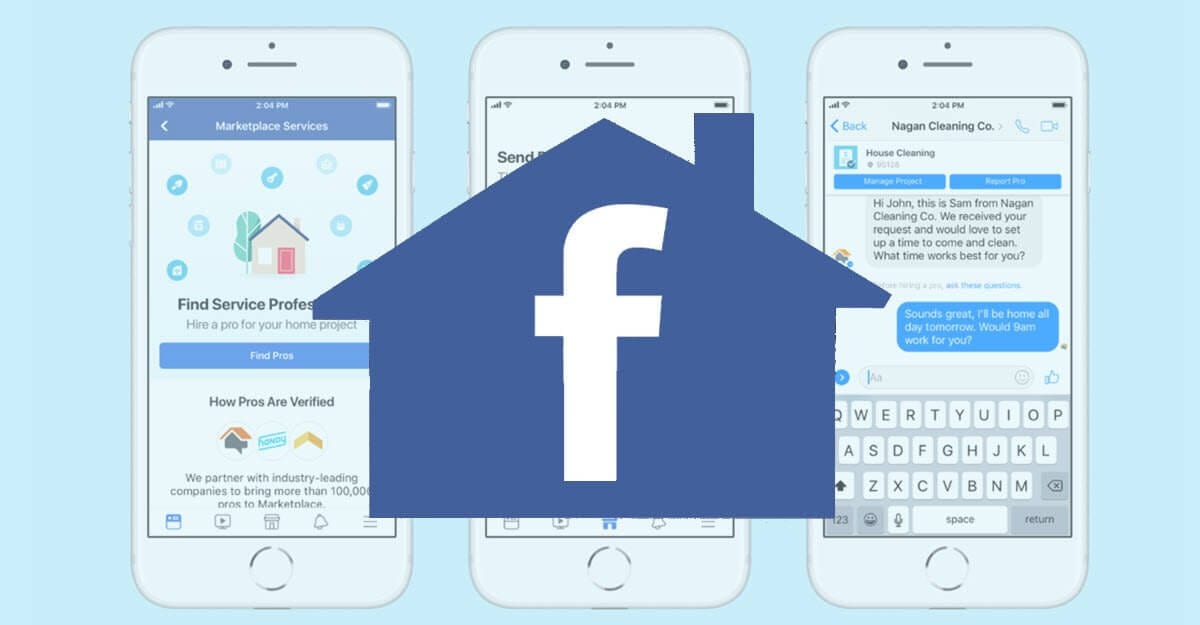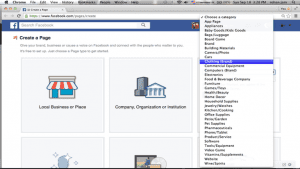Facebook Marketplace was introduced in 2016 as a place for people to purchase and sell within their communities. Think Craigslist, but with Messenger.
However, plans to incorporate more brands into the platform mean that huge changes are underway. In June 2018, Facebook announced the option for companies to place adverts in Marketplace. And soon Facebook will add more B2C options to the C2C platform.
In other words, think Amazon with a hyper-targeting algorithm.
So, how does Facebook Marketplace work exactly? And what could companies do to prepare? Read on to learn which functions are available at present.
What’s Facebook Marketplace?
Facebook Marketplace is an online shopping channel. It is a place for Facebook users to purchase and sell from each other regionally.
As of May 2018, Marketplace is utilized in more than 70 different nations by more than 800 million people each month.
You could access Facebook Marketplace in the Facebook app and on the desktop:
- On mobile, click on the white storefront symbol at the bottom of the app on iOS and at the top of the app on Android.
- On a desktop web browser, click on the red and white storefront icon in the left margin.
Lists in Facebook Marketplace are organized by categories like Entertainment, Housing, Vehicles, and Hobbies. Shoppers could filter searches by price and area, and save listings for future reference.
Each listing could contain up to 10 photos along with a description of the product.
customers could message sellers directly on Messenger to ask questions.
Facebook Marketplace adverts
Adverts in Facebook Marketplace seem in-feed when somebody browses.
These placements have the benefit of reaching people where they’re shopping. Advertisers have seen a marked rise in conversion rates compared with News Feed placements.
Facebook Marketplace Shop listings
For now, only firms in the US could apply to list and sell products in Facebook Marketplace. Auto dealerships in certain locations are additionally allowed to list vehicles via inventory partners.
Brand listings at present appear in two areas on Marketplace: in the Shop category and in the Daily Deals category. (As of Jan 2019, this content is only visible to US users.) Only hand-selected companies that offer brand-name products at discounted rates are eligible for the deals program.
Facebook does not charge list fees or take a cut of commissions. So for brands approved to list merchandise, Marketplace is basically a free, organic distribution channel. However, Marketplace listings require a Facebook Checkout integration, which costs a $.30 and 2.9 % fee for every transaction.
The deals program
There are 3 tiers to the deals program: the Everyday Deal, the Featured
Deal, and the Lighthouse Program.
Better deals are placed into higher tiers that provide higher exposure. For instance, brands that provide exclusive deals in the Lighthouse Program might profit from top placement, consumer subsidies, on and off-site marketing, and influencer outreach.
Adverts and shop listings have the benefit of Facebook’s focusing on algorithm, which will surface your content to the most likely customers.
Who’s eligible to sell on Facebook Marketplace?
Right now there are 2 primary avenues for companies excited about selling on Marketplace.
You may either apply to list in the Facebook Marketplace Shop or apply to be a deals partner. Keep in mind, applications are currently only open to US merchants and automotive firms.
How to apply to list in the Facebook Marketplace Shop
To apply to sell on Facebook Marketplace, Page admins need to finish the Marketplace eCommerce Retailer Interest Form. Because access to Marketplace is limited, working with one of Facebook’s listing partners, like BigCommerce, Shopify, or Zentail is a particular benefit.
To apply, retailers have to be able to meet these requirements:
- Sell new products to consumers
- Business based in the US
- Orders must be fulfilled within 3 days and received within 7 days
- Accept returns up to 30 days
- Product listings must embrace a name, description, additional product photos, and a thumbnail picture on a solid background. No graphic overlays, text, icons, or badges need to be on photos.
Firms from the following industries have been prioritized to sell on Marketplace: beauty, apparel, and accessories, bags and luggage, baby and kids, home décor.
How to apply to become Facebook Marketplace deals partner
Companies that meet the criteria to list on Facebook can also qualify for the deals program. In order to be considered, pricing for deals has to be at least 15 % below the manufacturer’s suggested list price (MSRP).
Categories prioritized for Daily Deals embrace: consumer electronics, home, gift cards, gaming, toys and games, intimates and hosiery, footwear, sports and outdoors, beauty, jewelry and watches, and apparel and accessories.
Facebook has launched a beta partnership program for firms in the automotive and housing rental industries. If your company is eligible, you could apply here.
If not, watch this area for future updates.
How to prepare your business page for Facebook Marketplace
Open a Facebook Page Shop
All of Facebook Marketplace lists need to have a Facebook Shop on their business page. Plus for a limited time, there is a chance that enterprise with shops might have products featured in Marketplace as the rollout unfurls.
Shops are your Facebook storefront. Any business page could have a shop, however, the availability of different functions will rely on your location.
Payments on your Facebook Shop could be set up for checkout on your site (or another one like Paypal), or directly on Facebook via integration with Facebook Checkout.
Your shop content could be shared, saved, utilized in adverts, and migrated to Marketplace. To open up the shop, you will need to add at least one product to be reviewed and approved.
Learn how to set up shop here.
Launch a product collection
The products you sell from your shop could be organized into collections. The better organized your collections, the simpler it’s for customers to find and purchase merchandise.
You could create particular collections just for Facebook, or mirror your collections to fit your site’s organization scheme. Merchandise could be added and removed from collections at any time, and you could have up to 50 collections available.
As a general rule, the higher quality the photographs and the more info you provide in each product description, the better. For maximum effectiveness, follow Facebook’s product image and description guidelines, particularly since it will line you up with requirements for potential Marketplace integration later on.
If your business is approved for Facebook Marketplace, products featured in your shop could be distributed in the marketplace feed. Ensure your photos and text adheres to Marketplace specifications in advance. (Keep in mind: solid background, no overlays.)
Integrate with Facebook Checkout
You could run a shop without Facebook Checkout, however, online retailers that want to use Marketplace should add it to their page’s shop. For the time being, this function is only available to retailers in the US.
Facebook’s payment function permits people to buy products directly on Facebook without having to leave the app of the site. Payment solutions with less friction automatically improve conversions.
Another benefit to Facebook Checkout is that buyer forms are pre-populated, making the checkout process run even smoother.



